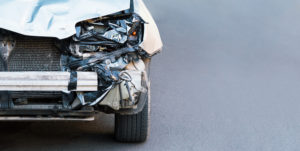3 Critical Crashpoints
Your Guide to Securing an Effective and Safe Auto Body Repair
 Why should these Critical Crashpoints matter to you?
Why should these Critical Crashpoints matter to you?
Because in the event of an accident..
Your Insurance Company’s Job
is to pay for manufacturer-specified repairs that restore your vehicle’s function, safety, appearance and value.
Your Collision Repair Shop’s Job
is to give you that repair back to manufacturer specifications.
And it’s Your Job
to make sure that the Insurance Company and Collision Repair Shop both do their jobs!
The World of Collision Repair is Changing
Facilitating a repair to “Industry Standards” used to mean the highest level of repair humanly possible based upon manufacturer specifications.
But now it’s insurance companies that have taken over the repair process based upon bottom line quotas and profitability rather than structural integrity and safety.
Their approach: That’s as good as your going to get with your coverage. Which is why they try to steer you to their referral shops that play along with their system.
As long as the bottom line matches their estimate, everyone is happy. Except you.
Because more often than not you are left with a substandard repair that has nothing to do with manufacturer specifications, structural integrity or your safety.
This is why it’s important to get your Insurance Company Referral Shop repair inspected by a Consumer Advocate Shop, to make sure that the repair that you got lives up to what it should be. Post Repair Inspections are becoming more commonplace for that very reason. Integrity. Soundness. Safety.
Critical Crashpoint #1 – Parts and Mechanical Systems
Precise parts replacement has as much to do with the condition of the replaced part as it does with using the correct part.
While used and aftermarket parts may have been forced upon your collision repair, only recently have they been integrated into repairs that are made to critical safety systems, such as air bags and front-end suspensions. In fact, repairs are now typically estimated with used parts, even though there’s not a vehicle manufacturer out there that recommends aftermarket and used parts.
Repairs to the internal structure of a damaged vehicle should restore its physical components to pre-incident operating condition, assuring functionality and safety. This means parts replacement that is both precise and effective.
It’s important to know if your repair is being facilitated with recommended OEM (Original Equipment Manufacturer) Parts or cheaper and less reliable Aftermarket Parts. Your vehicle’s safety may depend upon it!
Critical Crashpoint #2 – Structural Integrity
Your vehicle has “crash zones” that, by design, absorb energy in the event of an accident. These zones are designed to collapse during impact in order to create a “shock absorber” effect to safely protect your car’s occupants.
Only after careful inspection and repair to the vehicle’s structural frame and operating components, along with restoration of built-in safety features, can it be deemed secure and safe to operate according to industry standards.
This is not only important for the proper functioning of your repaired vehicle, but also for its effective performance in the event of a future incident.
Critical Crashpoint #3 – Paint Restoration
While the exterior appearance of your repaired vehicle may signal that “all is well” with what seems to be a perfect finish that shows no hint of an accident, what lies beneath should be of equal, if not greater importance.
Paint restoration should be a painstaking process that requires meticulous prep, artful matching, and masterful application while also preserving the structural integrity of your vehicle. Several layer applications take the coverage process from base to color match to protective clear coats, and the quality of the work should be carefully gauged not only for accurate paint restoration but also with a critical eye for detail.
This is another opportunity to spot any structural deficiencies that could affect future performance and safety.
After all, looking good is one thing.
Functioning properly with all safety systems in place is quite another.
It’s important to be vigilant about both!

